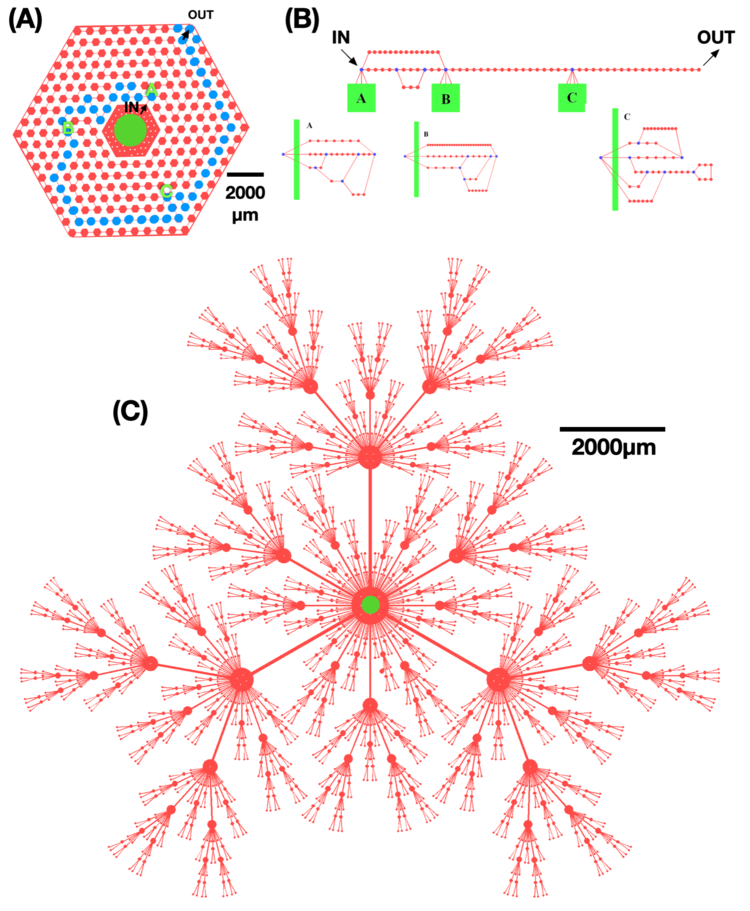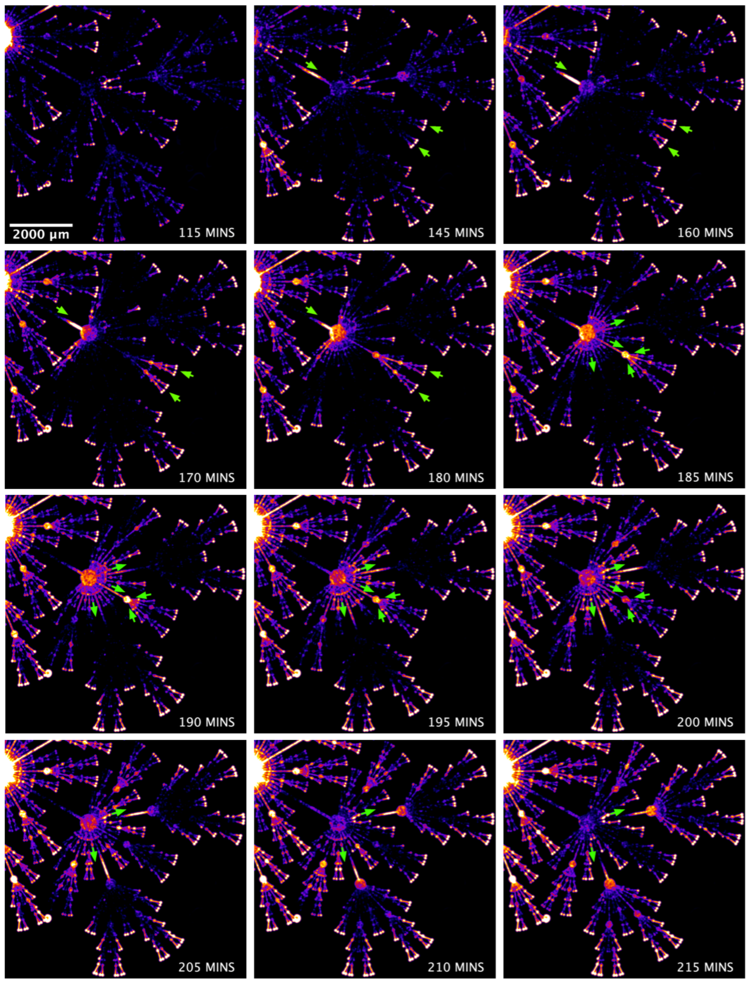Bacteria outside of the microbiology lab see far more complex environments than agar plates. We probe here to what extent bacteria when confronted with designed puzzling environments show the emergence of collective ways to explore a puzzling environment. We challenged communities of the common bacterium E. coli to escape 2 distinct topological puzzles which have a clear connection to the structures bacteria experience in nature: fractals and mazes.
We found the bacteria have powerful escape abilities from these structures. Fractals are scale-free topologies which repeat themselves with increasing magnification. A maze is not scale-free but has many possible paths leading from nodes, some paths from a node lead quickly to an exit, most other paths require much longer times for escape. In both cases such non-trivial topologies with their spatial entrapments present existential challenges to bacteria seeking food or concealment. Our designed puzzles may seem simplistic compared to Nature's complex structures. However, we hope these puzzles capture the essence of how bacteria have evolved to navigate and escape more complex structures, and reveal the evolved, emergent collective behavior of challenges to survival.
However, we must caution there are many aspects of these experiments we do not yet understand. While the setup is novel and the results interesting, they are debatable because they are so unexpected. Unlike many other experiments in physics, in microbiology control experiments are difficult in that one usually has to resort to control experiments using different strains of bacteria which may have their own altered behavior which is unexpected (again). We believe the phenomena we see are emergent: they can't be easily predicted from a bottoms-up approach and they might not even appear if you don't challenge the bacteria, of course. If they haven't been seen, we would say it is because the right questions haven't been asked. Targeting these phenomena could greatly inhibit the ability of bacteria to infect biological structures.

Some physical puzzles for probing bacterial collective intelligence: (A) A non-trivial topology maze (with many loops, which (B) describes in details), (C) A lung-like fractal with the fractal-dimension about 2.80.

An example for the collective escape of bacteria from fractal trapping. Image sequence of colliding nonperturbative solitary-waves scattering into adjacent fractal leaves. Green arrows display the incident and scattering waves.
Publications
- Trung V. Phan, Ryan Morris, Matthew E. Black, Tuan K. Do, Ke-Chih Lin, Krisztina Nagy, James C. Sturm, Julia A. Bos, and Robert H. Austin, "Bacterial Route finding and Collective Escape in Mazes and Fractals," Phys. Rev. X 10, 031017 (2020).
Media Outlets
- "These Bacteria Ate Their Way Through a Really Tricky Maze":
https://www.wired.com/story/these-bacteria-ate-their-way-through-a-real…

